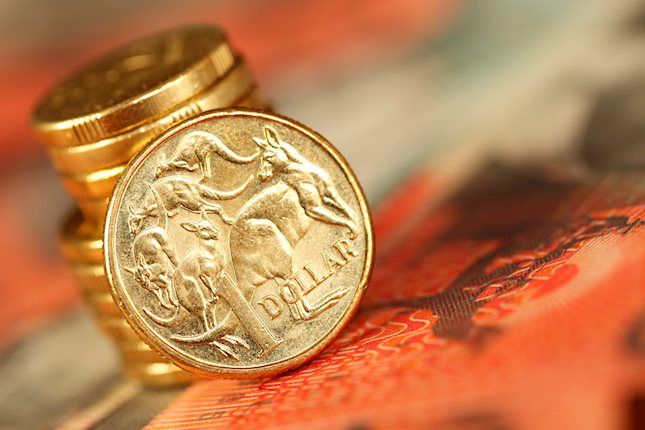n the Currency Strength table, the EUR was the strongest currency while the JPY was again the weakest. There were some changes last week with the GBP losing 3 points and the CHF gaining 2 points. The other currencies remained around the same level of last week with a maximum change in the strength of just 1 point. There were a lot of classification changes last week and these are analyzed in more detail in this article.
__________________________________
13 Weeks Currency Score Strength
The 13 Weeks Currency Strength and the 13 Weeks Average are provided here below. This data and the "13 weeks Currency Classification" are considered for deciding on the preferred range. Because it is not ideal nor desired to change the range for a currency every single week, we perform several checks to avoid this.
-
First of all the strength over a period of the last 13 weeks is considered. See each row for more information.
-
Next, the 13 weeks average is considered, see the last row called "Avg. 13 wks."
-
The number of weeks that a currency was stronger than another currency can also be considered.
-
The Technical Analysis (TA) Charts for each Time Frame could also be consulted.
For analyzing the best pairs to trade looking from a longer-term perspective the last 13 weeks Currency Classification can be used in support.
This was updated on 2 July 2017 and is provided here for reference purposes:
Strong: EUR, NZD and CHF. The preferred range is from 6 to 8.
Neutral: GBP, USD and JPY. The preferred range is from 3 to 5.
Weak: AUD, CAD. The preferred range is from 1 to 2.
When looking at the Average 13 wks. Score we can see that the EUR, CHF and the NZD are clearly grouped together as Strong currencies. The AUD and the CAD as Weak currencies and the Neutral currencies are the USD, JPY and the GBP. The latter has been 6 times weaker than the CAD, in the last 13 weeks, which is a Weak currency!
_____________________________________
Classification review
This week we take a look at the Weak currencies and the GBP. As can be seen in the chart below the GBP is showing weakness lately. It was the weakest currency in the last 5 weeks. If the currency remains this weak in the coming weeks it may become a Weak currency.
The AUD and the CAD are showing strength lately. The CAD is even the strongest this week. Both currencies are still too weak to become a Neutral currency in the coming weeks.Below you can see the Weekly Currency Score Chart with the 6 months' data as a reference.
_____________________________________
Currency Score Comparison
"Comparison table" and the "Ranking and Rating list"
The Forex Currency Comparison Table compares each currency with its counterpart based on the Currency Score. For more information about the currency Score of this week, you can read the article "Forex Ranking, Rating and Score" which is published every week together with this article.
By using the comparison table directly below you can get a view without the volatility and statistics as opposed to the "Ranking and Rating list". Only the strength of each currency against the counterparts is analyzed by using the Technical analysis charts of the 4 Time Frames that are also used for the "Ranking and Rating List".
The information from the Comparison Table is the source for calculating the "Ranking and Rating List" where this list additionally uses the volatility and statistics for creating the best and worst performer in the list from number 1 to 28.
The information is published once a week and be aware that rates change during this period. The mentioned scores also change and different opportunities may show up. There are many ways to follow the rate changes. This can be done e.g. by looking at the charts and checking e.g. the Ichimoku and/or MACD in the Weekly and Daily chart. There are also many tools, apps and websites where the movement of trading rates of currencies is shown in different automated ways. This may be in pips or through percentage differences or by comparing the values of indicators like the RSI, Moving Averages, MACD, Ichimoku etc. On my blog a Heatmap is available that can be of use also.
"Comparison table" and the "Currency Score Chart"
The additional value of this table compared to the Currency Score table is that the Comparison Table compares the strength between the currencies of each pair. By subtracting the strength of the weaker currency from the stronger currency we have a way to compare each pair combination.
The comparison table provides a way to compare currencies from a longer-term perspective of 13 weeks and also simultaneously taking the current trend into account. By coloring the currencies in the X and Y axis according to their Classification we can show what the best combinations are. In doing this we apply 2 rules to make it clearer.
The points here below has been updated on 5 July 2017 to provide more trading opportunities.
It is for that reason more aggressive and the Charts are very important to support this approach.
Comparison table Guide
-
First of all better-classified currencies in combination with weaker-classified currencies can always be traded. The Currency Score difference may be negative. In that case, the trade should be made after a pullback. In other words, a trade can then only take place after a recovery and the main trend being confirmed again.
-
Second, only equally classified currencies are approved when there is a positive Currency Score difference. Also here, the trend has to be confirmed again.
The difference between point 2 and 1 is that the long trend is not clear with 2 equally qualified currencies. These are both Strong currencies so that pair is in a side-way market. For that reason, the Currency Score difference cannot have a negative difference. A positive difference confirms the momentum for a short revival. -
Third, only Neutral currencies are Approved against a better-classified currency when there is a Currency Score difference of at least 4. In the case of a currency worse classified, the Currency Score difference has to be at least -4.
The above-mentioned situations applicable to this point may happen when there is a clear reversal and the chart is showing a new trend with good entries in the new direction. The difference between point 3 and the previous 2 points is that with point 3 a reversal in the whole market is possible when looking at all the currencies together. This gives a better chance when a trend reversal takes place compared to point 1 and 2! -
By preference, each currency should be selected for a trade with a score difference as far apart from each other as possible in the range from 1 to 8. However, these opportunities are rare and for that reason point 1 offers flexibility and is the best choice to trade, point 2 is the second best and point 3 is the third best choice.
-
The classification of the currencies in question may change in the longer term. Even though currencies may be in the same category a currency may be in a weaker/stronger period and may even change its classification in the future. See the current classification for the coming period at the beginning of this article.
______________________________________
Putting the pieces together
Based on the last "13 Weeks currency classification" and the "Currency Comparison Table" the most interesting currencies for going long seem to be the:
EUR, NZD and CHF.
These are Strong or Neutral currencies from a longer term perspective when looking at the last "13 Weeks currency classification".
For going short the same analysis can be done and the following currencies seem to fit best:
JPY, GBP, USD and AUD.
These are Weak or Neutral currencies from a longer term perspective.
Currencies with a high deviation seem less interesting to trade because they are less predictable. A good example now is/are e.g. the:
CAD.
______________________________________
Putting the pieces together
Based on the last "13 Weeks currency classification" and the "Currency Comparison Table" the most interesting currencies for going long seem to be the:
EUR, NZD and CHF.
These are Strong or Neutral currencies from a longer term perspective when looking at the last "13 Weeks currency classification".
For going short the same analysis can be done and the following currencies seem to fit best:
JPY, GBP, USD and AUD.
These are Weak or Neutral currencies from a longer term perspective.
Currencies with a high deviation seem less interesting to trade because they are less predictable. A good example now is/are e.g. the:
CAD.
___________________________________
Besides this article, I also use the Forex "Ranking, Rating and Score" which is also available once a week on my blog. In the article "Ranking, Rating and Score" we look in more detail at the absolute position of the currencies and pairs.
It is recommended to read the page "Currency score explained", "Introduction to the FxTaTrader Forex Models" and "Statistics and Probabilities" for a better understanding of the article. If you would like to use this article then mention the source by providing the URL FxTaTrader.com or the direct link to this article. Good luck in the coming week.
______________________________________
The articles are my personal opinion, not recommendations, FX trading is risky and not suitable for everyone.The content is for educational purposes only and is aimed solely for the use by ‘experienced’ traders in the FOREX market as the contents are intended to be understood by professional users who are fully aware of the inherent risks in forex trading. The content is for 'Forex Trading Journal' purpose only. Nothing should be construed as recommendation to purchase any financial instruments. The choice and risk is always yours. Thank you.
Recommended Content
Editors’ Picks

USD/JPY refreshes monthly high above 155.00 on BoJ's rates on-hold
USD/JPY is back above 155.00, refreshing monthly highs following the BoJ policy verdict. The BoJ left the short-term rate target unchanged in the range of 0.15%-0.25%. The decision came in line with the market expectations. Governor Ueda's press conference is now awaited.

AUD/USD bounces off two-year lows at 0.6200 as USD takes a breather
AUD/USD rebounds from two-year lows of 0.6200 early Thursday. The pair benefits from a pause in the hawkish Fed cut-led US Dollar uptrend. However, concerns about China's fragile economic recovery and Trump's tariff plans could cap the Aussie's recovery.

Gold price sticks to recovery gains; not out of the wood yet amid Fed's hawkish tilt
Gold price attracts some haven flows amid the post-FOMC sell-off in the equity markets. The Fed’s hawkish outlook continues to lift the US bond yields and caps the XAU/USD. Traders now look to the US Q3 GDP for some impetus ahead of the US PCE data on Friday.

Memecoins DOGE and PEPE approaches key levels: Eyes for a recovery
Dogecoin and Pepe prices retest their crucial support level on Thursday after declining more than 10% this week. Sideline investors seeking to accumulate dog-themed and frog-themed memecoins may consider doing so at their support levels for a potential recovery rally ahead.

Sticky UK services inflation to come lower in 2025
Services inflation is stuck at 5% and will stay around there for the next few months. But further progress, helped by more benign annual rises in index-linked prices in April, should see ‘core services’ inflation fall materially in the spring.

Best Forex Brokers with Low Spreads
VERIFIED Low spreads are crucial for reducing trading costs. Explore top Forex brokers offering competitive spreads and high leverage. Compare options for EUR/USD, GBP/USD, USD/JPY, and Gold.


